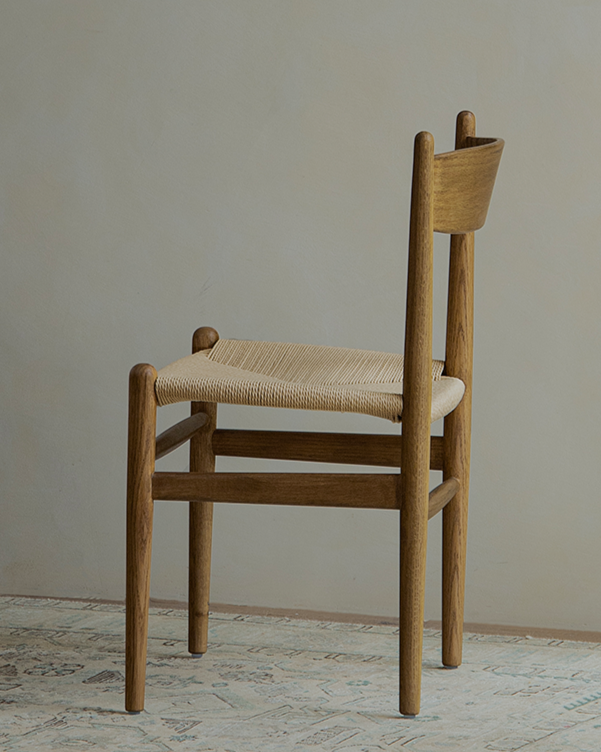Unravel the Timeless Allure of Mid-Century Modern Wooden Chairs!
The mid-century modern design movement is celebrated as one of the most influential styles in the history of furniture design. Emerging in the aftermath of World War II, this movement captured the essence of a new age—an era characterized by optimism and innovation. Among the most iconic pieces of this period are the wooden chairs that embody the spirit of simplicity and functionality. These chairs are not just furniture; they are a statement of style and a testament to the artistry of their creators. In this article, we will delve into the characteristics that define mid-century modern wooden chairs, explore their historical roots, and examine the design principles that continue to resonate in contemporary furniture design.

Characteristics of Mid-Century Modern Wooden Chairs
Mid-century modern wooden chairs are distinguished by their clean lines and organic forms. This design style prioritizes functionality without sacrificing visual appeal. The chairs often feature tapered legs, minimal ornamentation, and a streamlined silhouette that reflects the ethos of 'form follows function.' Common materials include solid woods such as teak, walnut, and oak, which are not only durable but also enhance the natural beauty of the designs. The use of wood in mid-century modern chairs often showcases the material's grain, adding a tactile quality that draws the eye. Many chairs from this era are also designed for comfort, with ergonomic shapes that support the body, making them as practical as they are aesthetically pleasing. Personal anecdotes from friends who own mid-century wooden chairs often highlight how these pieces have become conversation starters in their homes, blending seamlessly with both vintage and modern decor.
Historical Context and Evolution
The mid-century modern design movement emerged in the 1940s and continued into the 1960s, a time of significant cultural shifts. Post-World War II, the United States experienced a surge in consumerism, and there was a growing desire for affordable yet stylish furniture. Scandinavian design heavily influenced this movement, introducing functional simplicity and a connection to nature. Designers such as Charles and Ray Eames, Hans Wegner, and George Nelson were pioneers of this style, emphasizing craftsmanship and quality materials. The aesthetic was also shaped by the American landscape, with its emphasis on open spaces and integration with nature. The combination of these influences resulted in furniture that not only met the practical needs of the time but also reflected the optimism and forward-thinking spirit of the post-war era. Many of my friends reminisce about visiting their grandparents' homes, where these chairs were not just furniture but symbols of a modern lifestyle that prioritized comfort and style.
Design Principles of Mid-Century Modern Chairs
At the heart of mid-century modern wooden chair design are several fundamental principles: simplicity, functionality, and aesthetics. These principles guide the creation of each piece, ensuring that it serves a purpose while remaining visually striking. Simplicity is reflected in the absence of excessive ornamentation, allowing the beauty of the materials to shine through. Functionality is paramount; each chair is designed to provide comfort and support, often with innovative solutions such as molded seats and flexible backs. Aesthetically, mid-century modern chairs often feature a harmonious balance of form and color, with many using bold pops of color or contrasting materials to create visual interest. This design philosophy resonates today, as contemporary designers continue to draw inspiration from mid-century modernism, incorporating its principles into new creations. Friends who have embraced this style often express how its principles promote a sense of calm and order in their living spaces, making their homes feel both modern and timeless.
Impact and Legacy
The impact of mid-century modern wooden chairs on contemporary furniture design is profound and enduring. Today, these chairs remain highly sought after, valued for their iconic status and timeless appeal. Many modern designers look to mid-century inspirations, integrating elements of this style into their work to evoke nostalgia while addressing current design trends. The legacy of mid-century modernism can be seen in various aspects of contemporary living, from minimalist interiors to sustainable design practices that honor craftsmanship. As people continue to appreciate the artistry and history behind these wooden chairs, they remain a staple in both modern homes and design exhibitions, serving as a bridge between the past and the present.
Timeless Appeal of Mid-Century Modern Chairs
In summary, mid-century modern wooden chairs represent not just a style of furniture, but a significant chapter in the history of design. With their unique characteristics, rich historical context, and underlying design principles, these chairs have left an indelible mark on the world of interior design. Their timeless allure continues to captivate both collectors and casual admirers alike, reminding us of the importance of combining functionality with beauty. As we appreciate these iconic pieces, let's celebrate their historical significance and the aesthetic value they bring to our spaces.








